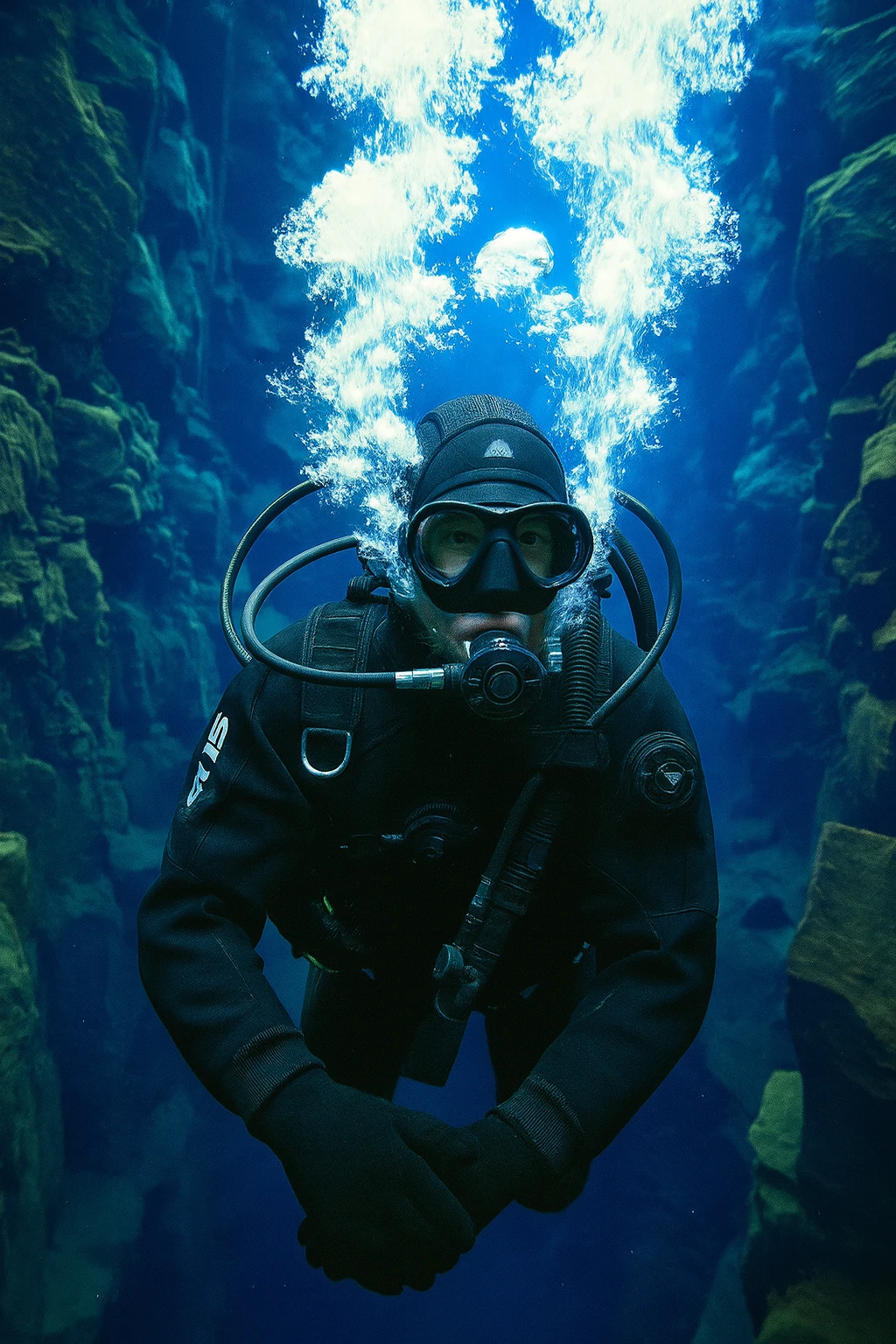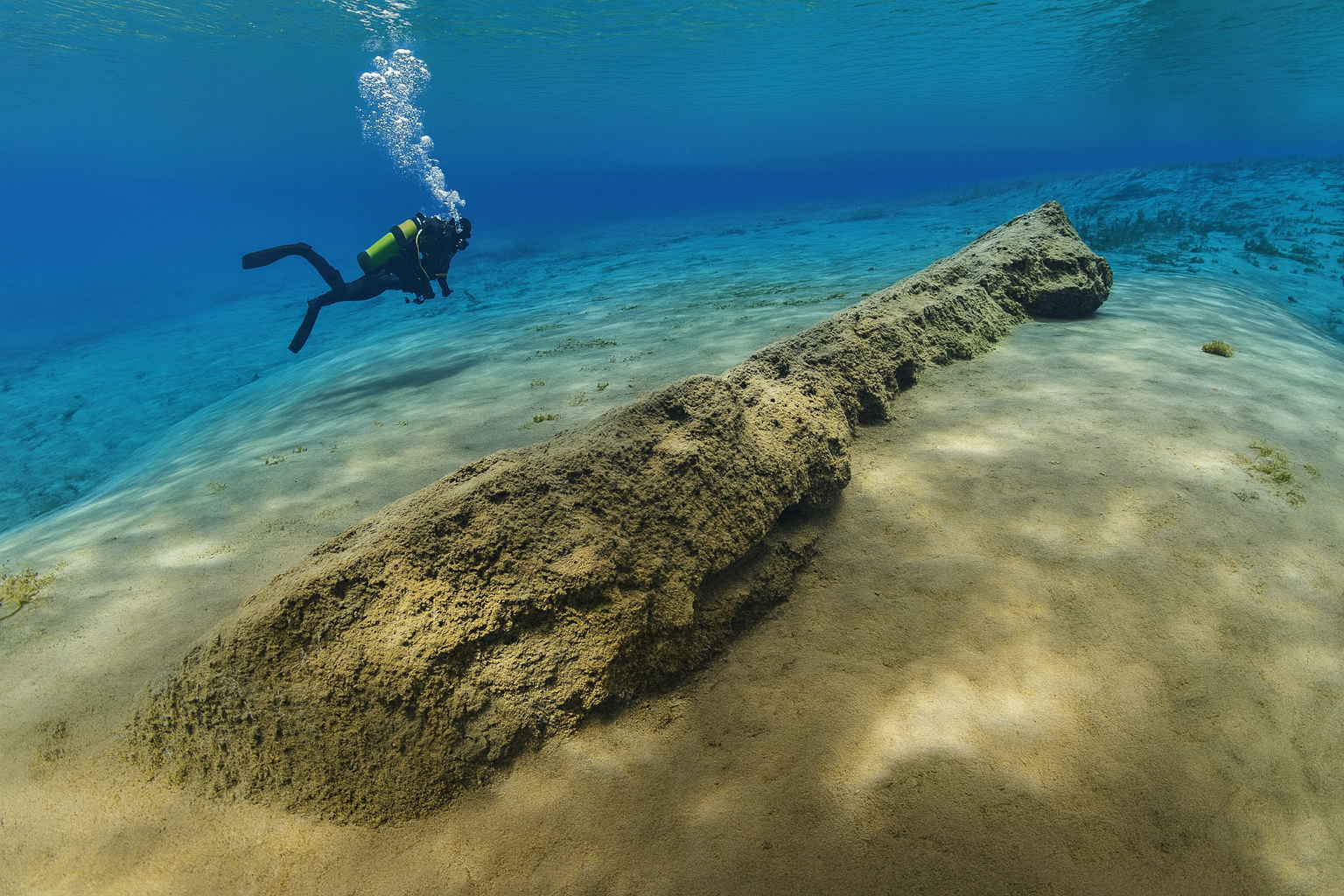Quick Facts About Diving
at Silfra Fissure
Certification Requirement
Divers must hold a PADI Open Water (or equivalent) + Dry Suit certification (or proof of 10 logged dry suit dives).
WATER source &
Temperature
Silfra is filled with water from the Langjokull Glacier. The water holds a constant temperature of 2–4°C (35–39°F) year-round.
Buoyancy Challenge
Because the water at Silfra is so pure and dense, divers experience exceptional buoyancy control requirements, making dry suit skills essential.
Maximum
diving depth
Maximum diving depth is about 18–23 meters (60–75 feet).
Visibility
Up to 100 meters underwater. The Silfra water is among the clearest on Earth.
Dive Duration
A typical dive at Silfra lasts about 30–40 minutes, depending on air consumption and conditions.
Dives PER Day
Icelandic regulations limit dives to one per day in Silfra, to reduce risks from the cold and preserve diver safety.
Annual Visitors
Around 20,000–25,000 divers and snorkelers explore Silfra each year, making it one of Iceland’s top adventure attractions.

Silfra diving offers a rare chance to descend into the only place on Earth where you can dive directly between two continental plates.
Located in Iceland’s Thingvellir National Park, Silfra Fissure is filled with glacial water that has been filtered through lava rock for decades, creating visibility that often stretches beyond 100 meters.
Water temperatures remain a steady 2–4°C year-round, and dives typically last 30–45 minutes with a maximum depth of 18 meters.
To take part in a Silfra fissure diving tour, you need at least a PADI Open Water certification and either a dry suit certification or proof of recent dry suit experience. With small groups, professional guides, and unforgettable geology, Silfra diving is one of the most unique cold-water dives in the world.
Requirements for
Silfra Fissure Diving
These requirements are in place to ensure diver safety and protect Silfra’s fragile environment.
To participate in Silfra diving tours,
you must:
Diving
Who it’s for:
- Only certified divers can dive Silfra. At minimum:
- PADI Open Water (or equivalent) plus a dry suit certification.
- Or a logged dry suit dive within the past two years.
Experience:
- Divers fully submerge and explore Silfra’s chambers at greater depths than snorkelers.
- Maximum depth is around 18–20 meters, but the focus is not depth — it’s visibility and geology.
- Diving allows close inspection of rock walls, cracks, and plate edges that snorkelers only see from above.
Highlights:
- Cathedral section: a 100-meter-long corridor with visibility extending as far as the eye can see.
- Plate boundaries: the surreal feeling of swimming between continents.
Key Safety Factors
Cold Water Conditions
- The water in Silfra is glacial meltwater, typically between 2°C (35F) and 4°C (39F) year-round.
- To keep participants safe and comfortable, dry suits are required for both divers and snorkelers. These prevent hypothermia by insulating the body from the cold water.
Entry and Exit Points
- Visitors can only enter and exit Silfra at designated metal platforms.
- The entry platform allows snorkelers and divers to make final equipment checks before descending.
- The exit platform at the Silfra Lagoon ensures a controlled and safe departure while minimizing environmental impact.
Guided Tours Only
- All activities are guided by certified dive/snorkel operators. Independent diving or snorkeling is not allowed.
- Guides provide safety briefings, equipment checks, and close supervision throughout the experience.
- Tours are limited in group size.
Equipment and Training Requirements
- Snorkelers need no prior experience but must be able to swim.
- Divers must be certified (usually at least PADI Open Water with a dry suit specialty or equivalent).
- All participants are given properly fitted equipment, including dry suits, hoods, gloves, and fins.
Emergency Protocols
- Guides carry communication devices and first aid training.
- Exiting Silfra outside the designated points is prohibited, but exceptions are made if an emergency requires it.

Diving history of Silfra Fissure
The story of diving in Silfra begins not with international explorers, but with a handful of Icelanders eager to bring a new sport to their homeland. In 1966, Þröstur Sigtryggson, a teacher at Reykjavík’s Stýrimannaskóli, returned from the United States with freshly acquired scuba skills. Hoping to spark interest in Iceland, he advertised a beginner’s diving course. A small but curious group gathered, completed their training, and soon set their sights on Þingvallavatn, the great rift valley lake in Þingvellir National Park.
It was there, in the narrow fissures splitting the bedrock, that the group made their first descent into Silfra. One of these pioneers, Níkúlás Halldórsson, later recalled that they were captivated by the same qualities that continue to draw divers today: the astonishing clarity of the water and the beauty of the submerged world. At the time, recreational divers had only wetsuits; dry suits, now considered essential in Iceland’s glacial waters, were still beyond reach.
A decade later, in 1976, another diver entered Silfra who would help shape its future. Tómas Knútsson, who later founded the dive company DIVE.IS, first explored the fissure wearing a wetsuit, just as the early pioneers had. By 1989 he adopted a dry suit, which allowed him to dive year-round in Silfra and across Iceland’s frigid waters. His continued passion for the site played a pivotal role in putting Silfra on the global diving map.
Through the 1990s and 2000s, as international travelers discovered Iceland’s raw landscapes, Tómas and his colleagues introduced more divers to Silfra’s surreal environment. Word spread of a place where one could swim between tectonic plates in water so pure it offered visibility of more than 100 meters. Today, Silfra is regarded not only as a geological wonder but also as one of the most remarkable freshwater dive sites in the world — a place where history, science, and adventure meet beneath the surface.